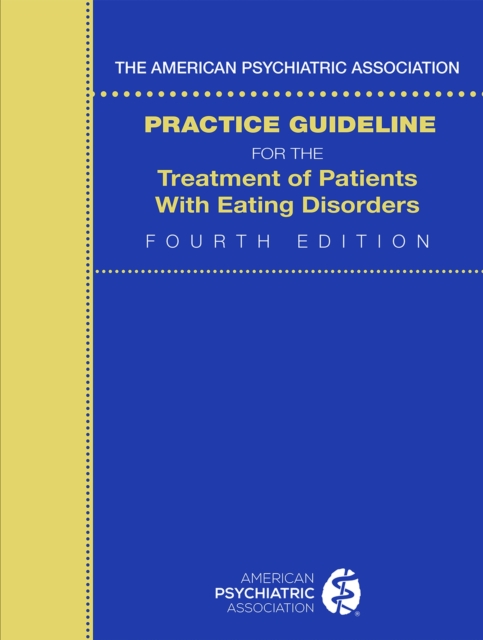
The American Psychiatric Association Practice Guideline for the Treatment of Patients with Eating Disorders Paperback / softback
by American Psychiatric Association
Paperback / softback
Description
The lifetime prevalence of eating disorders in the United States is approximately 0.80% for anorexia nervosa, 0.28% for bulimia nervosa, and 0.85% for binge-eating disorder, although estimates can vary depending on the study location, sample demographic characteristics, case finding, and diagnostic approaches.
Importantly, the lifetime burdens and psychosocial impairments associated with an eating disorder can be substantial because these illnesses typically have an onset in adolescence or early adulthood and can persist for decades.
Since publication of the previous practice guideline on eating disorders, there have been many studies on psychotherapies for individuals with these diagnoses as well as some studies on pharmacotherapies.
However, substantial gaps remain in the availability and use of evidence-based treatments for individuals with an eating disorder. The American Psychiatric Association Practice Guideline for the Treatment of Patients With Eating Disorders seeks to enhance the assessment, treatment, and quality of care in adolescents, young adults, and adults with an eating disorder.
The guideline focuses on evidence-based pharmacological, psychotherapeutic, and other nonpharmacological treatments for eating disorders, primarily anorexia nervosa, bulimia nervosa, and binge-eating disorder.
In addition to statements related to assessment and treatment planning, which are an integral part of patient-centered care, the guideline provides direction on implementing these recommendations into clinical practice, with the goal of reducing the mortality, morbidity, and significant psychosocial and health consequences of these important psychiatric conditions.
Information
-
Only a few left - usually despatched within 24 hours
- Format:Paperback / softback
- Pages:114 pages, No
- Publisher:American Psychiatric Association Publishing
- Publication Date:02/04/2023
- Category:
- ISBN:9780890425848
£49.00
£42.65
Information
-
Only a few left - usually despatched within 24 hours
- Format:Paperback / softback
- Pages:114 pages, No
- Publisher:American Psychiatric Association Publishing
- Publication Date:02/04/2023
- Category:
- ISBN:9780890425848






